November 26, 2025 | 07:03 GMT +7
November 26, 2025 | 07:03 GMT +7
Hotline: 0913.378.918
November 26, 2025 | 07:03 GMT +7
Hotline: 0913.378.918
Tram Chim National Park covers an area of approximately 7,500 hectares, is a typical miniature model of the Dong Thap Muoi region, with a diverse ecosystem, especially birds.
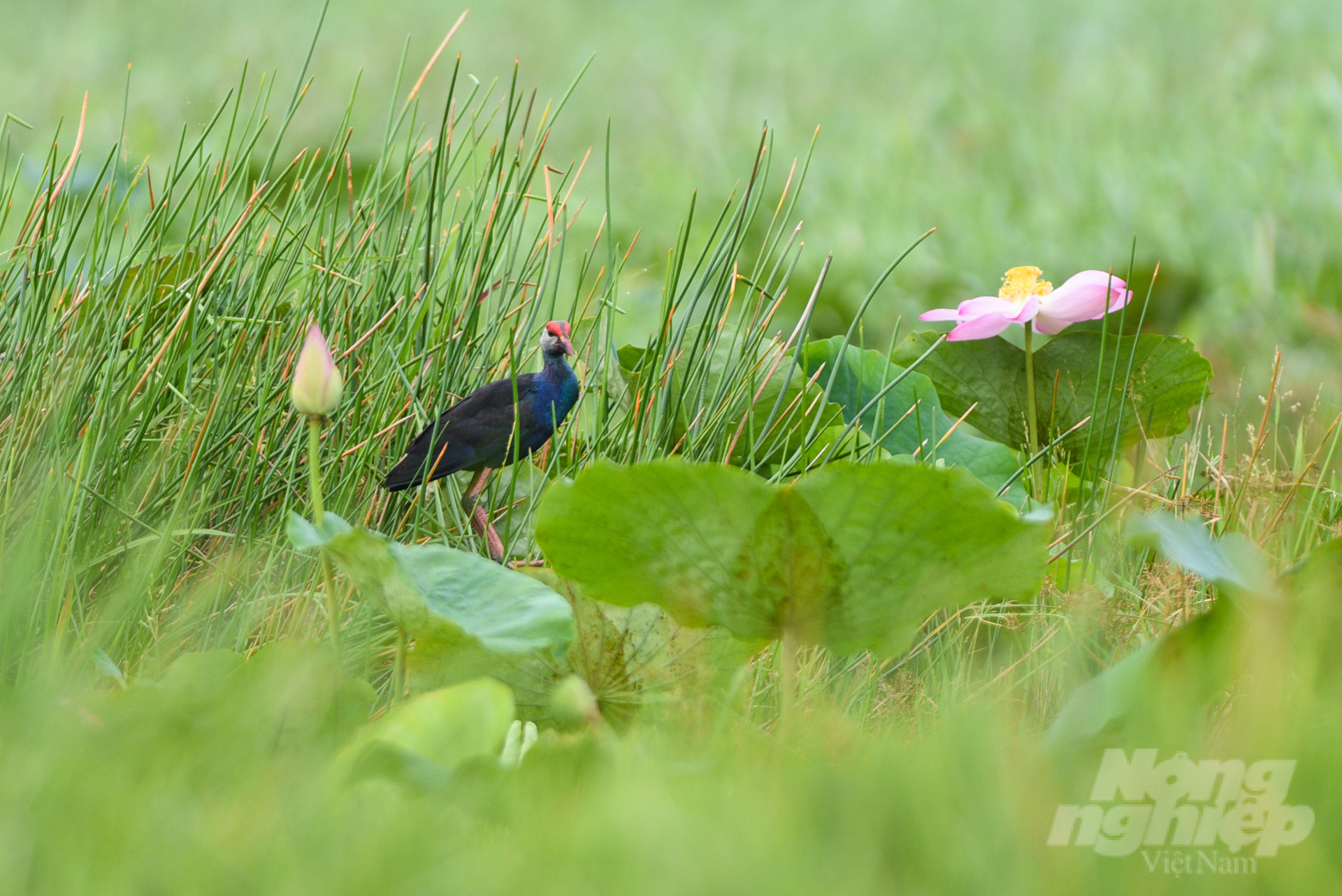
Dong Thap is not only well-known for its lotus fields, horizontal rice fields, and countless storks but also as an ecotourism destination that attracts a large number of visitors, one like Tram Chim National Park.
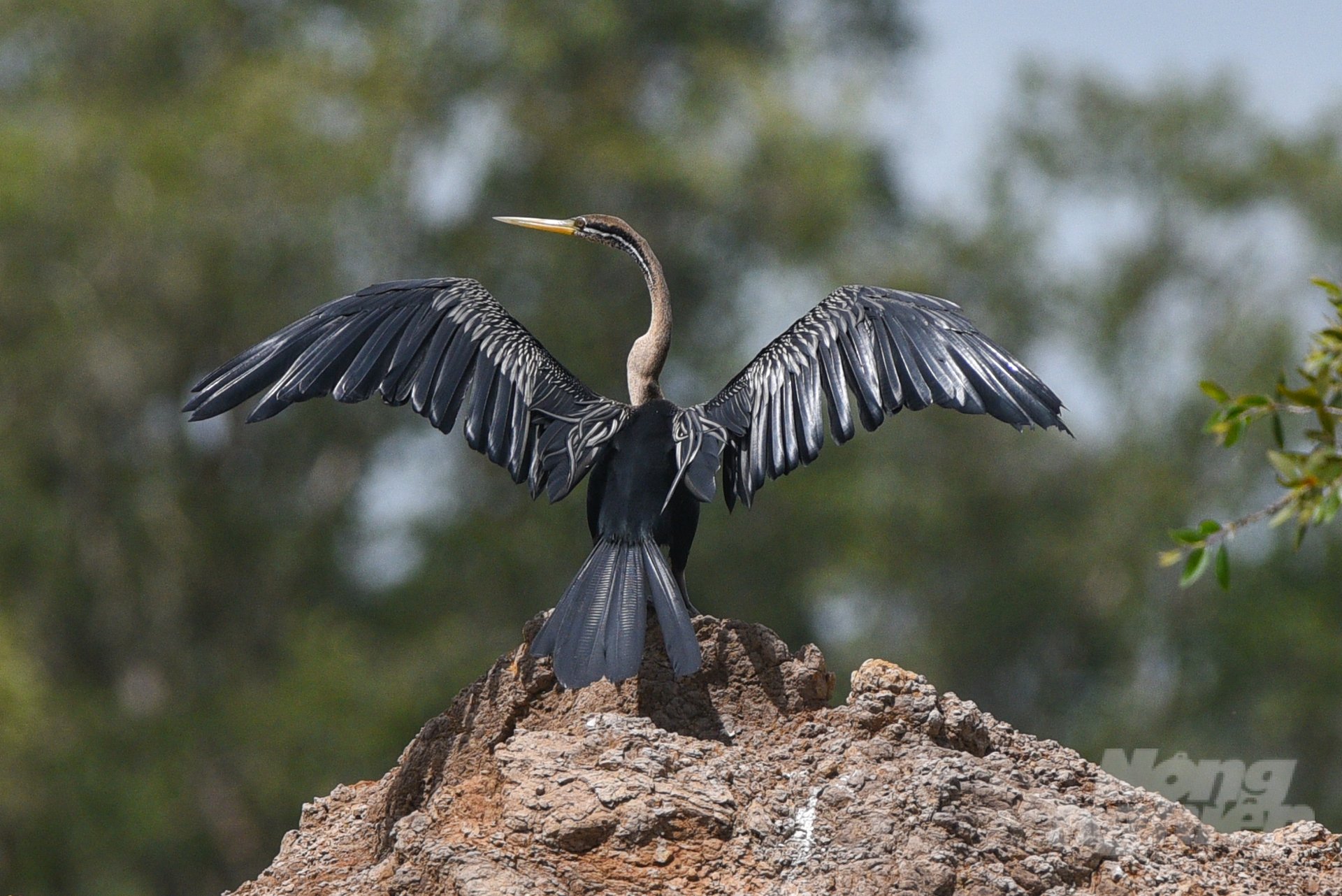
The neck of an oriental darter (Anhingidae family, Suliformes order) resembles that of a snake, so its Vietnamese name literally means "the bird with a snake-like neck". There are currently only four species of darters within a single genus, and one of them is threatened with extinction.
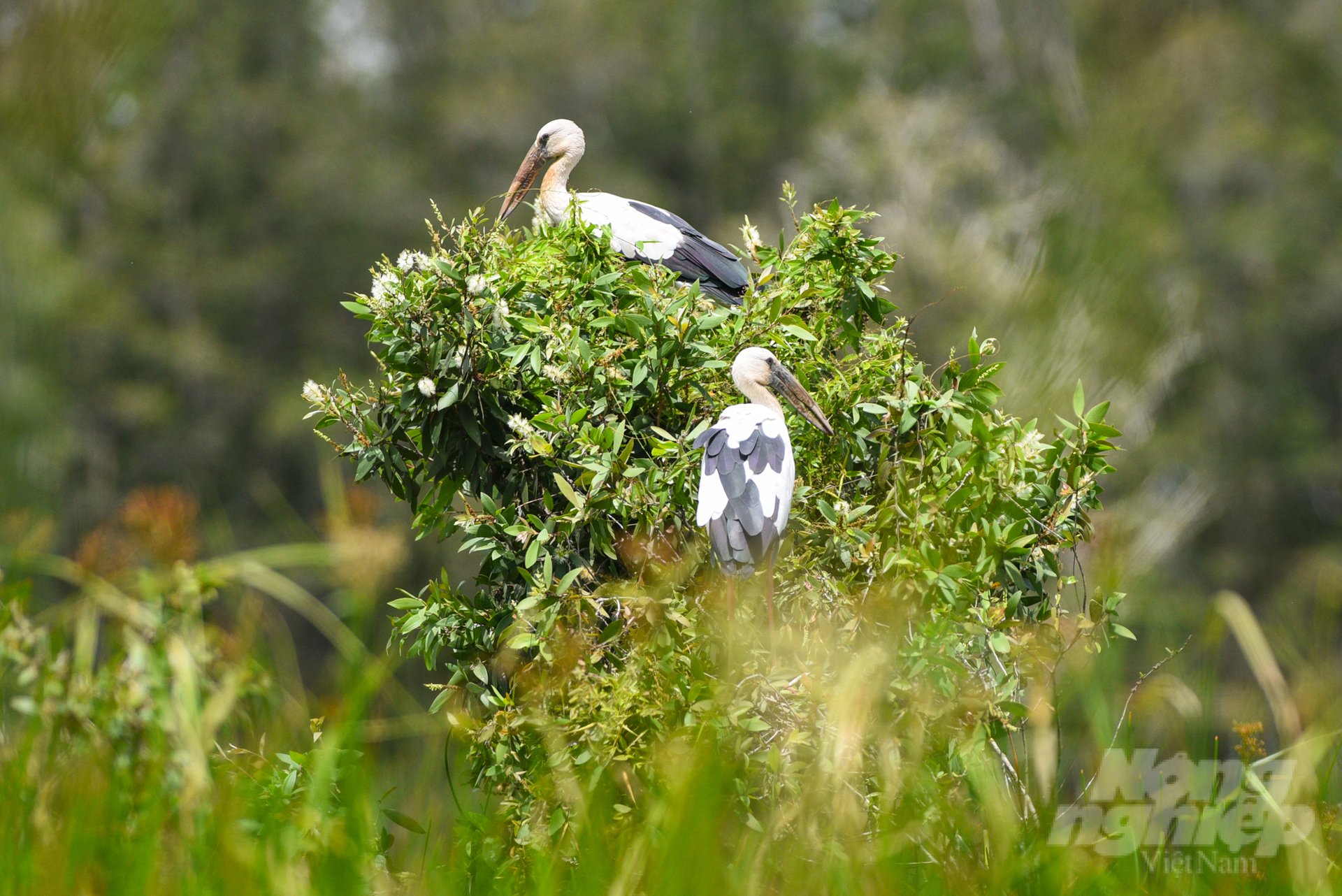
Asian openbill stork (Anastomus oscitans) is listed in the Vietnamese Red Book as an uncommon and aquatic avian. The stork remains well adapted to the environment of Tram Chim National Park as a result of the wetland's pure water and abundance of vegetation, on which it feeds year-round.

Its primary food consists of numerous types of snails, crabs, frogs, and insects. The Asian open-billed stork aids Tram Chim National Park in eradicating an abundance of yellow apple snails.
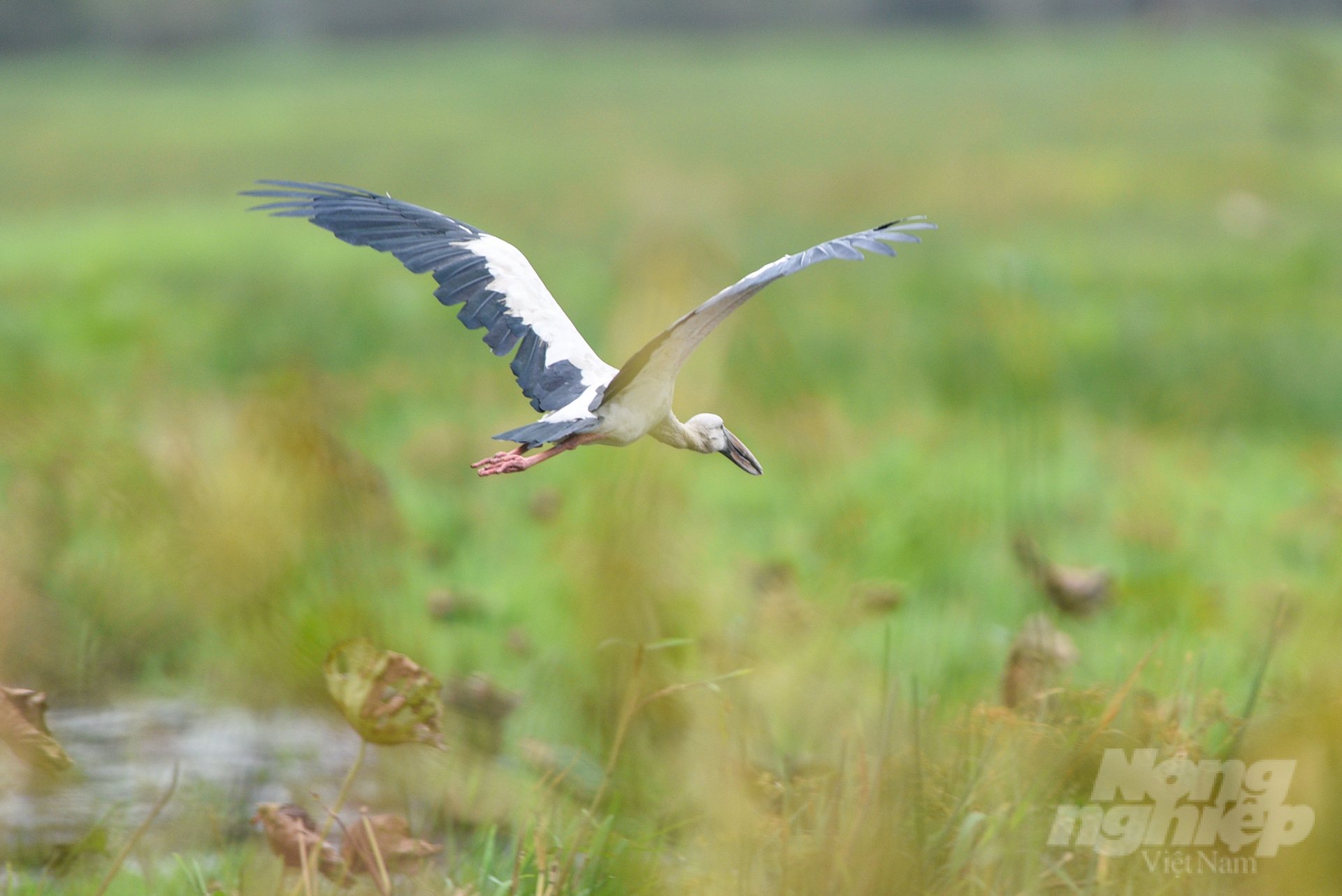
It weighs between 1 and 1.5 kilograms, is sedentary, and has lustrous black wings and a green or purple tail. The plumage of adults changes with the seasons. During the breeding season, Asian open-billed storks construct a nest of sticks on trees and lays two to four eggs.
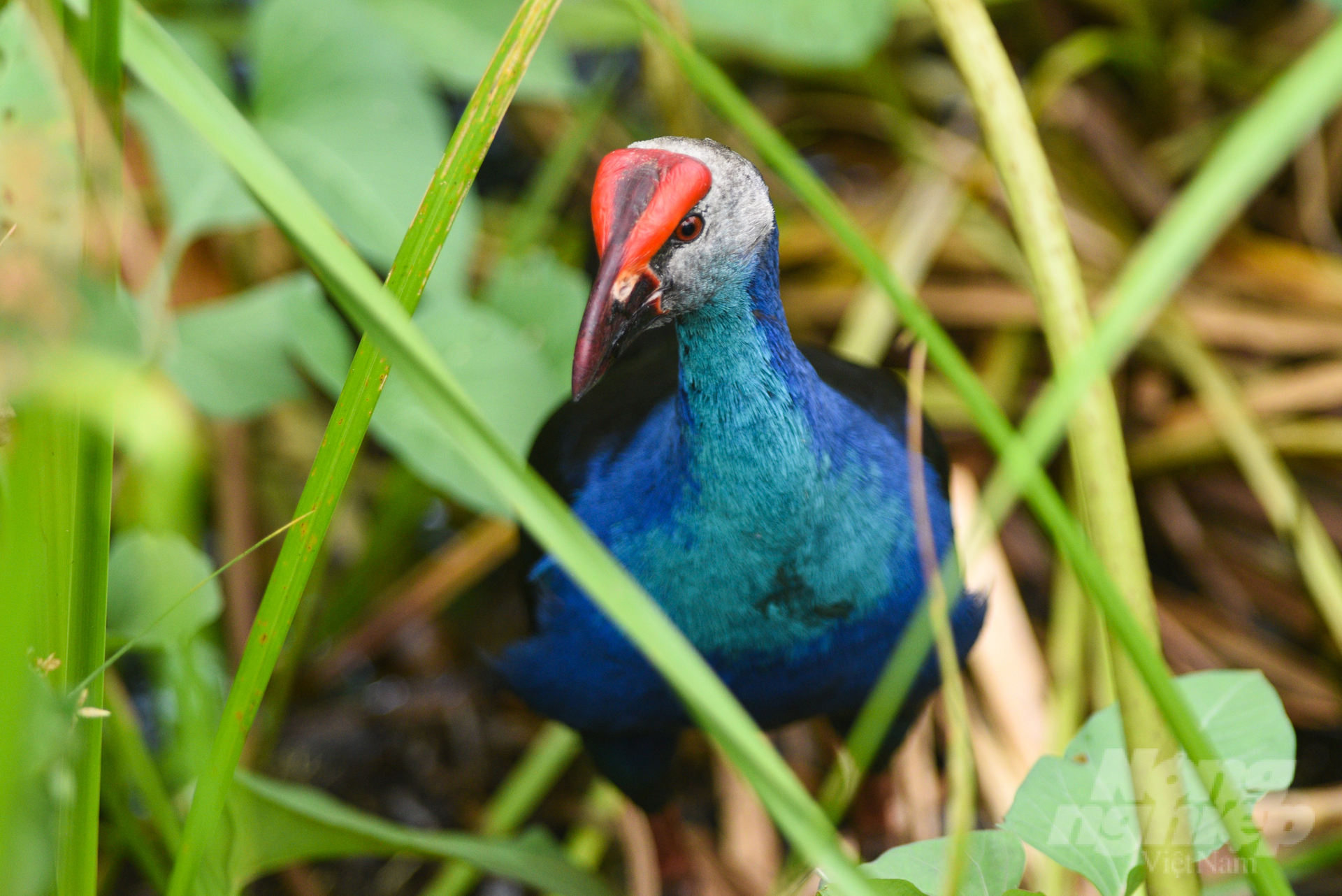
Porphyrio is the genus of the swamphen or swamp hen within the rail family. They reside in the south and are frequently encountered in the Tram Chim, U Minh Ha, U Minh Thuong, and Dat Mui National Parks.
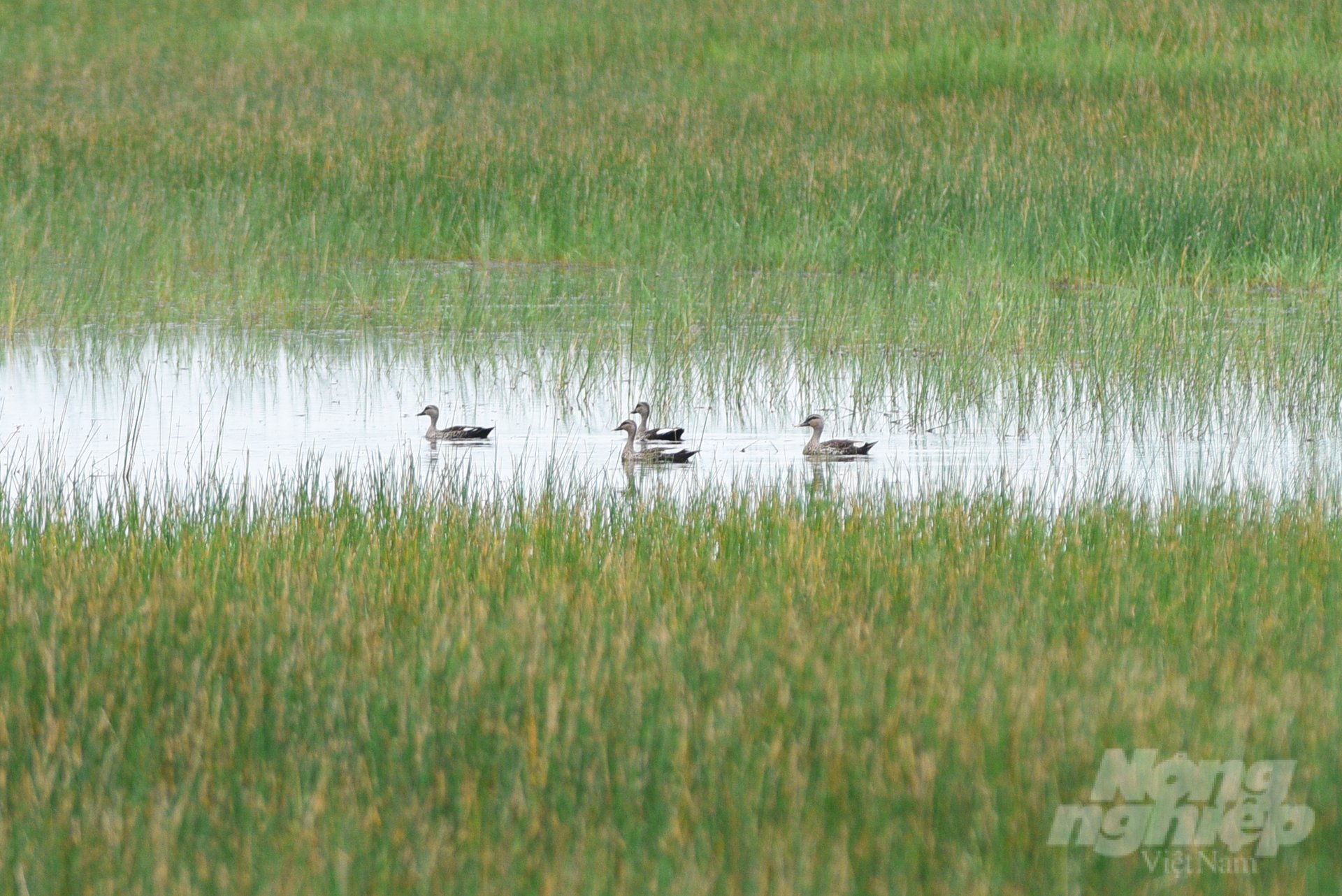
Mallard. The mallard's avian ancestor originated in the Anatidae family. Also known as the wild duck and the gourd duck. A species of duck that breeds in temperate and subtropical America, Asia, Africa, and Europe.
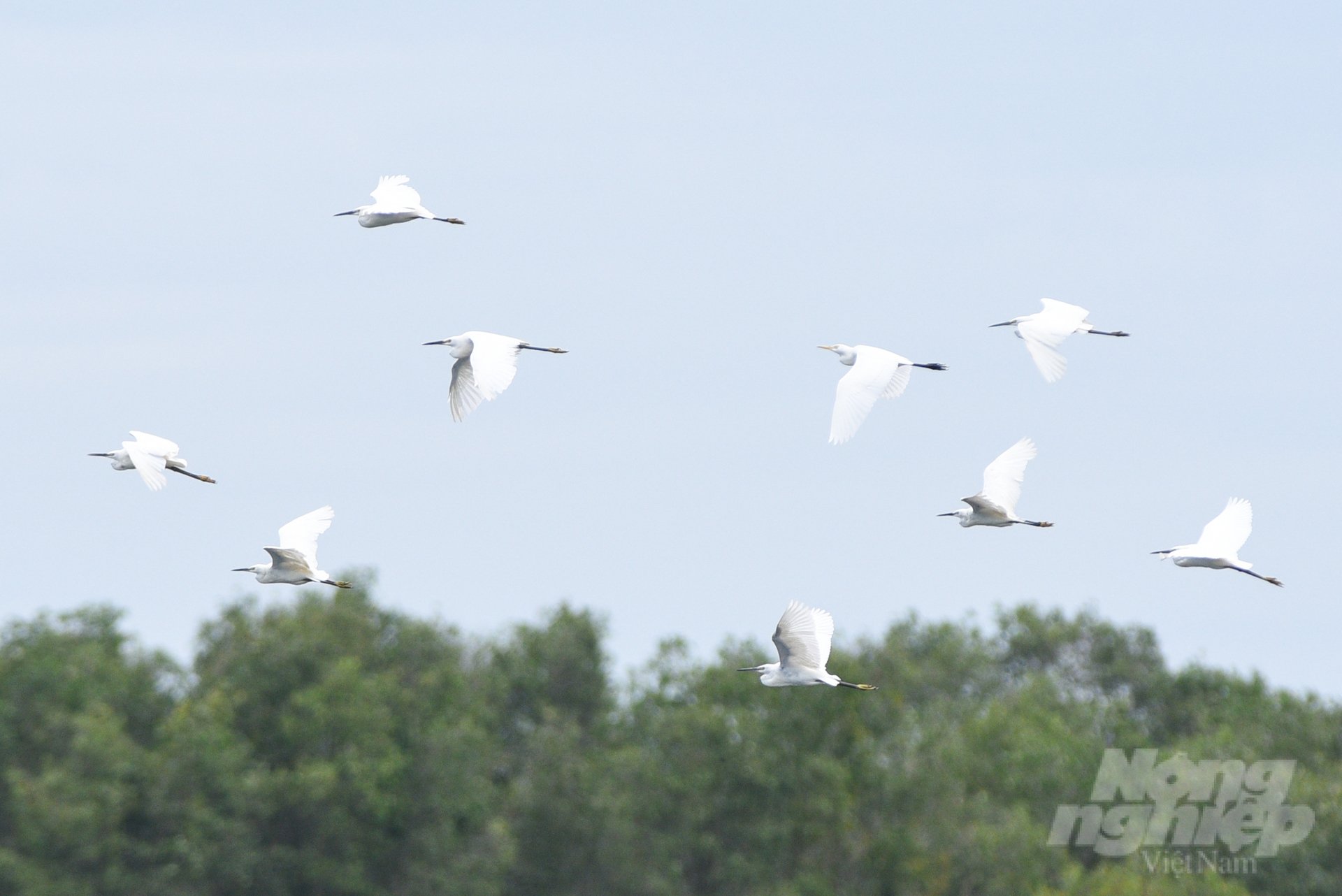
The white stork, known scientifically as Egretta garzetta, is primarily found in warm-climate wetland habitats in Europe, Africa, Asia, and Australia. Typically, this animal inhabits tiny populations. In addition to fish, they eat amphibians, small reptiles, birds, mammals, crustaceans, mollusks, and invertebrates.

The Black shag, or Great cormorant, has a slightly longer tail and a nape with yellow patches. This species inhabits inundated rivers, canals, ponds, and pastures. Fish is the primary sustenance of the black shag. Some regions even refer to them as cormorants.

The black shag has a long body and neck, a rounded snout with a slightly enlarged tip, and curved, sharp talons. They have large, broad wings, black plumage with a greenish-purple tint on the head, neck, upper body, and tail, and a greenish-purple tint on the upper body, neck, and tail. There is a fairly broad white streak on the cheekbones around the eyes and breast.
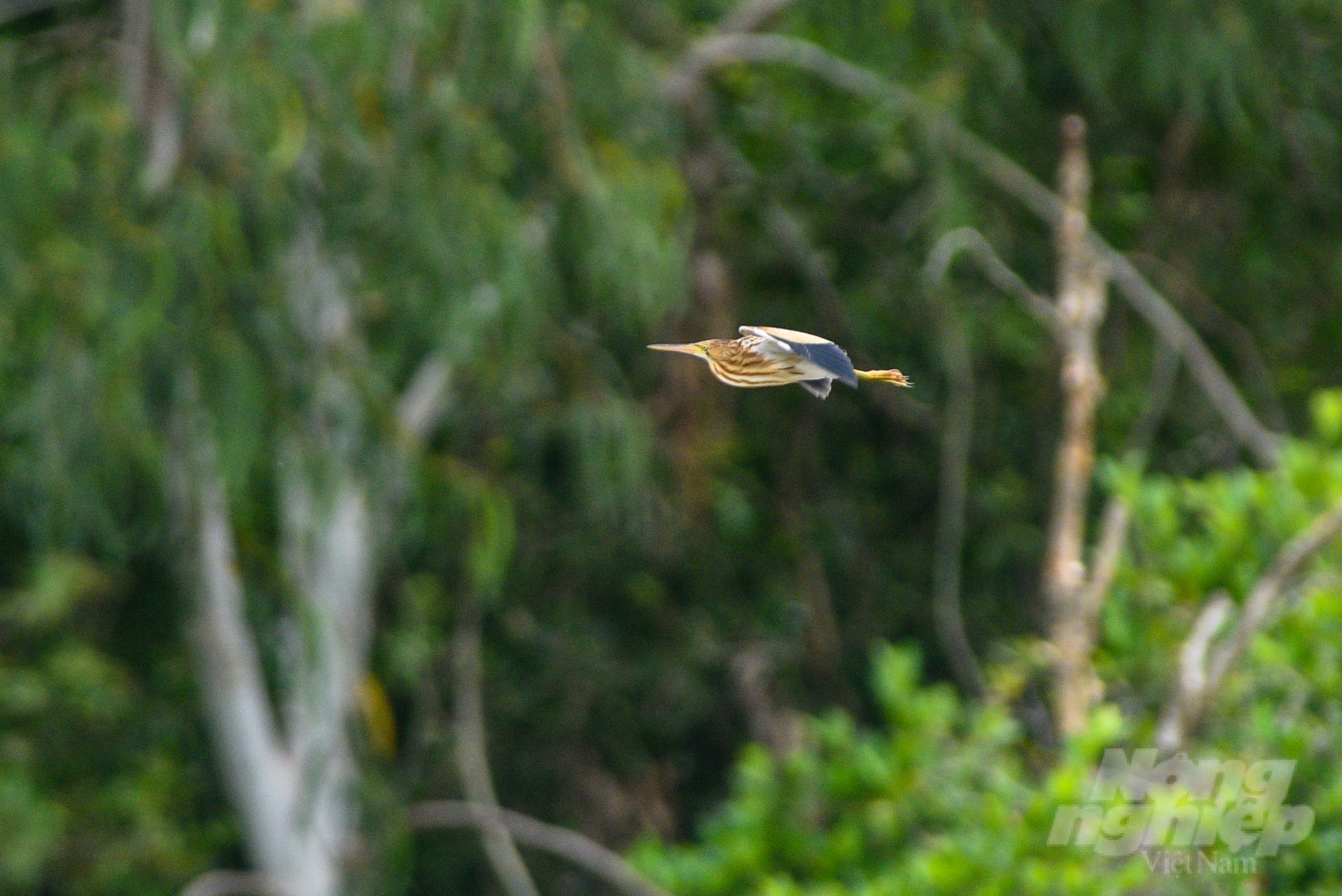
The Chinese pond-heron, Ardeola bacchus, is a member of the Ardeidae family of East Asian freshwater birds. The Chinese pond heron is approximately 50 centimeters in length and has a white background, chestnut back, yellow bill with a black tip, yellow legs, and yellow irises. During reproductive season, its feathers become scarlet, blue, and white.
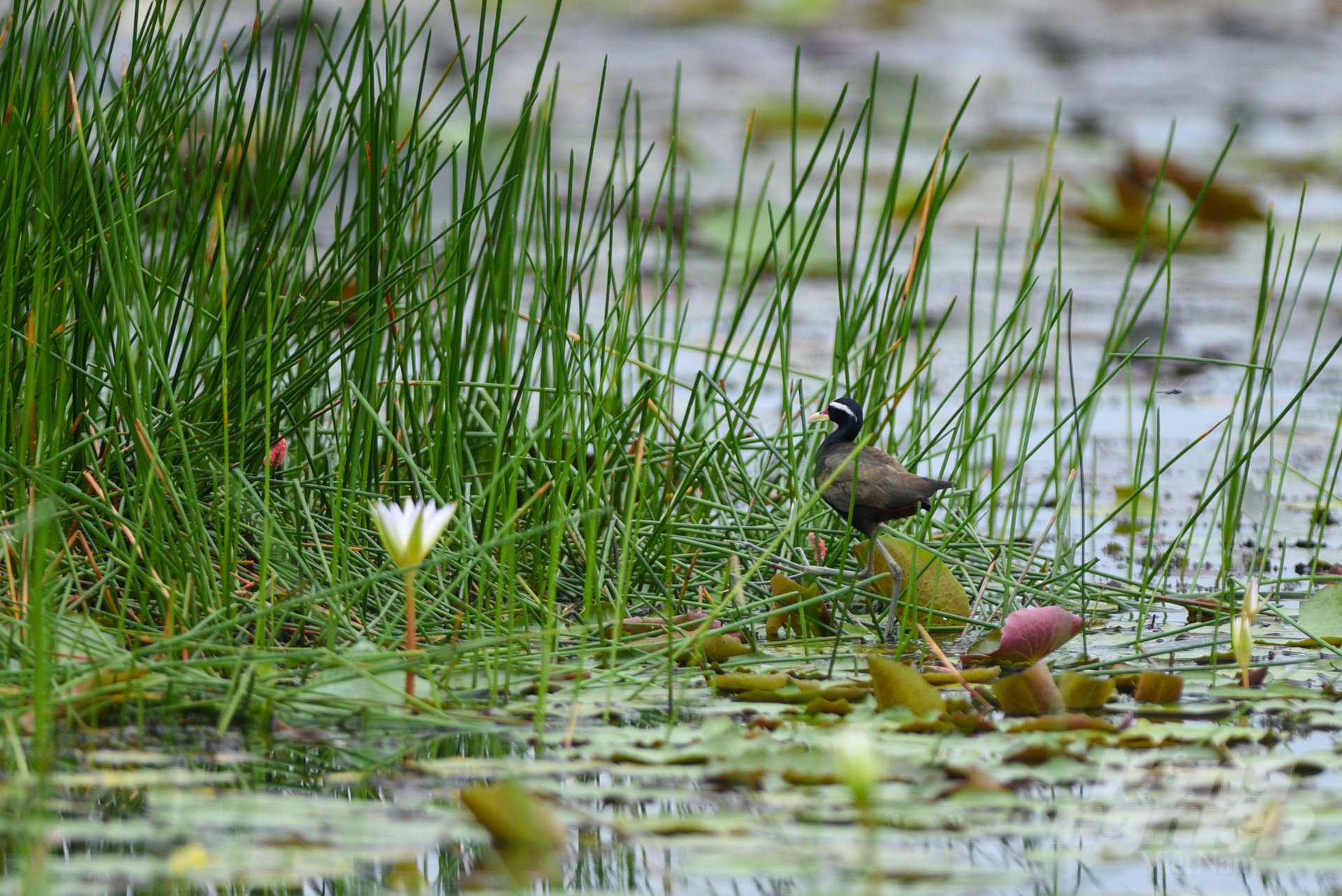
Metopdius indicus or Pheasant-tailed Jacana is a member of the Jacanidae family. The mature Pheasant-tailed jacana has feathers above the eyes and a broad eyebrow band that extends to the white nape. The remainder of the head and neck is red, the armpits and wings are dark green, and the upper neck is either greenish-red or purple-green.
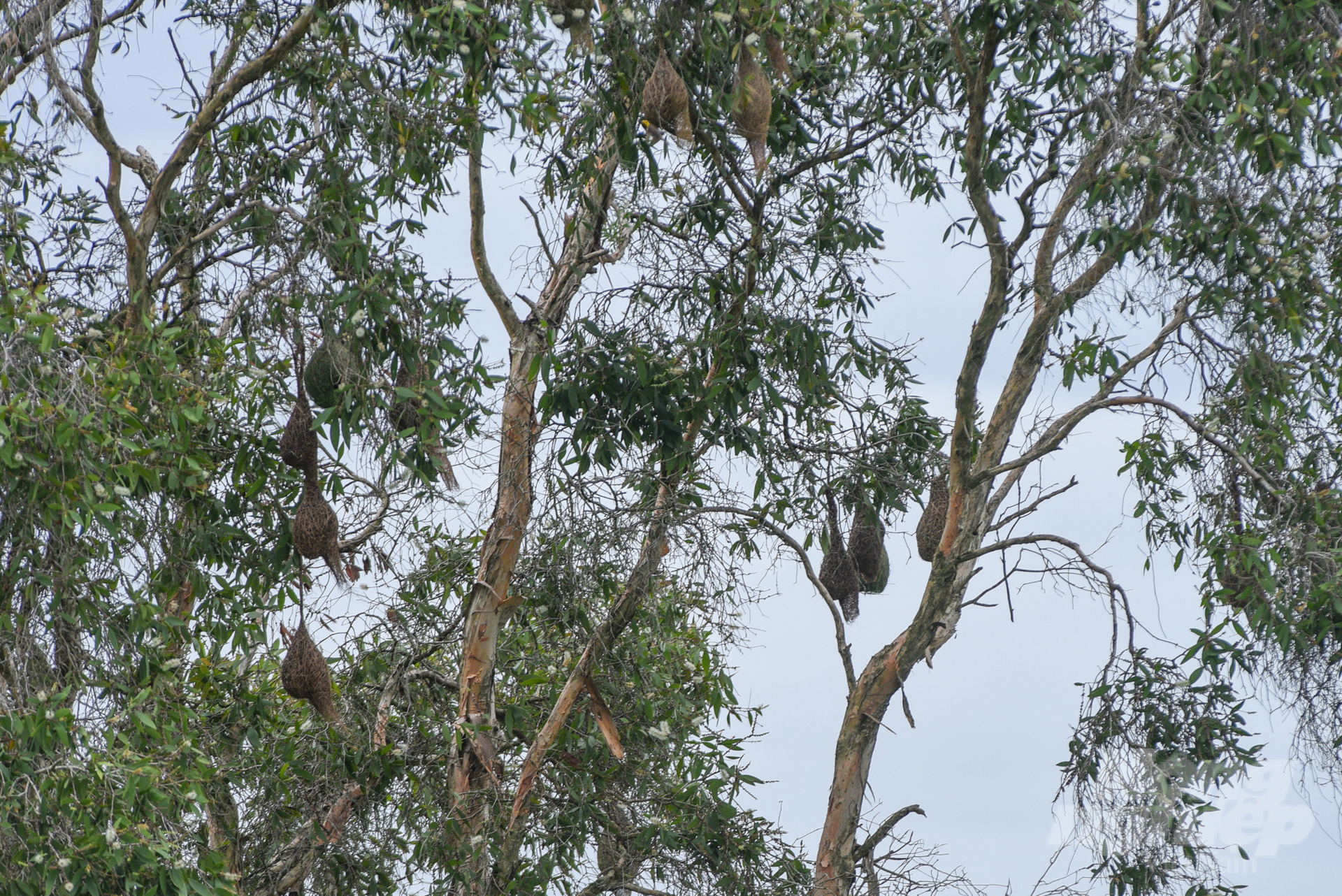
Nests of weaver birds constructed on large trees in Tram Chim National Park's wetlands. The Weaver Bird has perhaps the most intricate nesting patterns of all species. They typically reside in clusters. They typically construct multiple nests on a single tree limb. Typically, males construct shelters as a means of expression and to attract females.
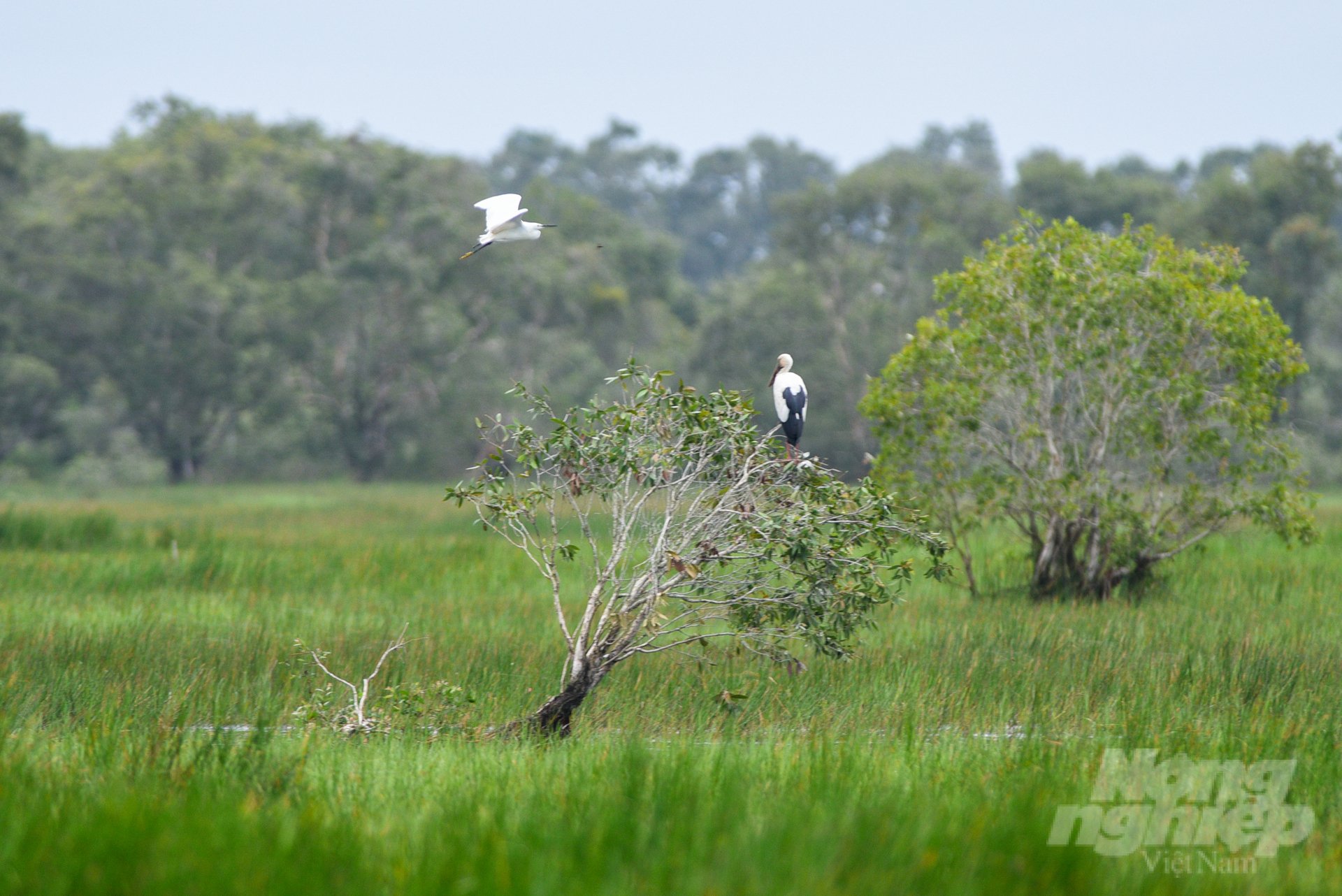
Tram Chim National Park is preserving birds to support research on waterfowl systems, evaluate biodiversity values and park resources, and thus contribute to the conservation of these species. existing water in the garden and contributing to the database of the garden.

Red-crowned crane, yellow-breasted sparrow, red-backed owl, eastern grass-owl, osprey, eastern marsh harrier, old javanese, great cormorant, spot-billed pelican, gray-footed pelican, darter, painted stork, white-rumped shama, and 101 other common bird species have been recorded in Tram Chim National Park, Dong Thap province.

Tram Chim National Park is recognized as one of Vietnam's regions with numerous rare avian species due to its abundant natural environment. Tram Chim National Park is therefore strictly protected to aid in the preservation of rare species.
Translated by Linh Linh

(VAN) Deputy Minister Nguyen Quoc Tri emphasized the determination to prevent violations at CoP20, sharing enforcement results and commitments to strengthen cooperation with the international community in the coming period.

(VAN) In addition to strengthening the relationship between schools and enterprises, the Aus4Skills project expands opportunities for female students and people with disabilities to work in the transport and logistics sector.

(VAN) Nghe An is preparing policy, technical, and resource steps to participate in the forest carbon credit market.
/2025/11/25/1648-2-110733_532.jpg)
(VAN) From 2011 to 2023, Ca Mau province lost approximately 6,200 ha of coastal land and protection forests due to erosion, threatening many residential areas, infrastructure facilities, and production zones.

(VAN) Quang Ngai holds strong potential for carbon credits but needs a clear legal and policy framework to secure sustainable revenue from this resource.

(VAN) With its diverse ecosystem, Phu Quoc National Park plays a vital role in environmental protection and biodiversity conservation and serves as the core zone of the Kien Giang World Biosphere Reserve.

(VAN) Cooperation activities under the Aus4Skills program focus on: logistics professional development, competency-based training and assessment (CBTA), leadership innovation, and digitalization.